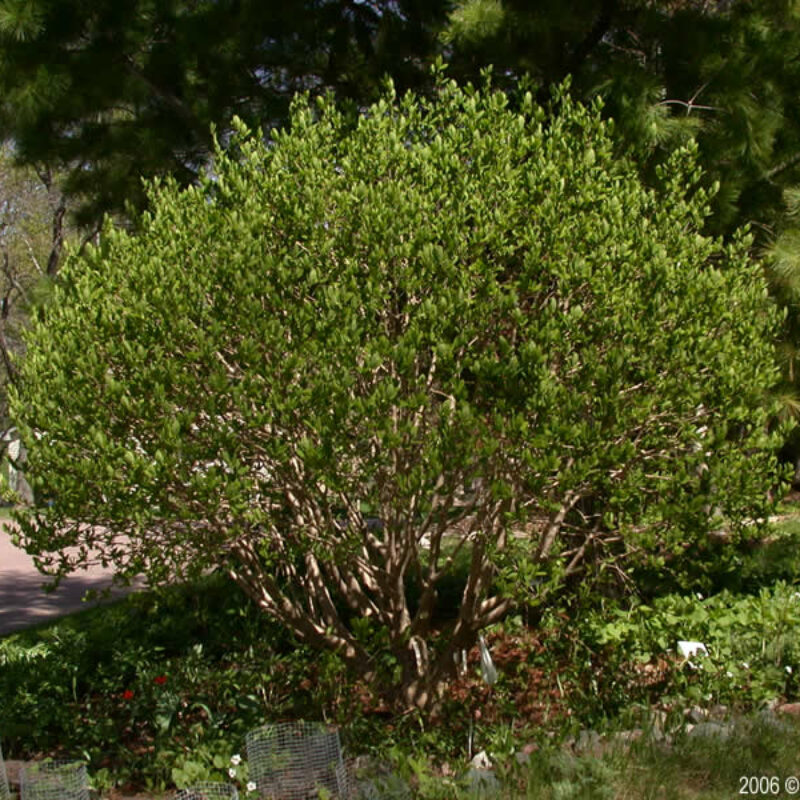LeatherwoodDirca palustris
The yellow early spring flowers and red fall fruit make this an attractive choice for a shaded shrub in a landscape. Leatherwood is one of the few native shrubs blooming abundantly in deep shade, due to its early leaf-out. It is a shrub indicating an old growth forest. The bark of Dirca palustris has been know to cause dermatitis.
USDA symbol: DIPA9
General Information
| Plant Type | Shrub |
|---|---|
| Height | 6 feet |
| Light Exposure | Part Sun, Shade |
| Soil Moisture | Medium |
| Bloom Color | Yellow |

Tolerances
| Flooding / Inundation Tolerance | Moderate |
|---|---|
| General Resilience | 5 |
| Salt Tolerance | None |
| Stress Tolerance | Alkaline Conditions, General Disturbance |
Pollinator Value: Medium
| Bloom Months | April to May |
|---|---|
| Larval Host of | Moths |
| Specific Pollinators Hosted | Leucanthiza dircella |
| Pollinator Benefit | Insect Pollinated, Provides Nectar |
Project Planning
| Project Type | Rain Garden, Restoration |
|---|---|
| Coefficient of Conservatism | 9 |
| Herbivore Sensitivity | Low |
| Lifespan | Perennial |
| Rate of Spread | Medium |
| Soil Stabilization | Shallow |
| Vegetative Reproduction | Absent |
Range
| County | Aitkin, Becker, Beltrami, Blue Earth, Brown, Carlton, Cass, Chisago, Clearwater, Crow Wing, Douglas, Fillmore, Goodhue, Hennepin, Houston, Hubbard, Itasca, Kandiyohi, Koochiching, Lake, McLeod, Meeker, Mille Lacs, Morrison, Nicollet, Olmsted, Otter Tail, Pine, Polk, Ramsey, Rice, St. Louis, Stearns, Todd, Wabasha, Wadena, Washington, Winona, Wright |
|---|---|
| Ecoregion | Driftless Area, Lake Agassiz Plain, North Central Hardwood Forests, Northern Lakes and Forests, Northern Minnesota Wetlands, Western Cornbelt Plains |
| Approximate Eco Province | Eastern Broadleaf Forest, Laurentian Mixed Forest, Prairie Parkland, Tallgrass Aspen Parklands |
